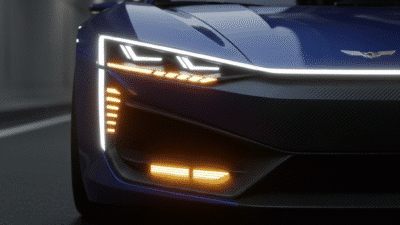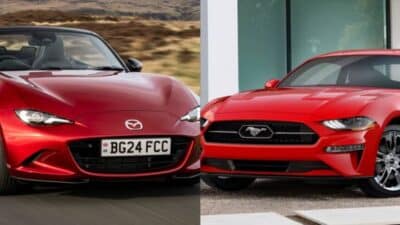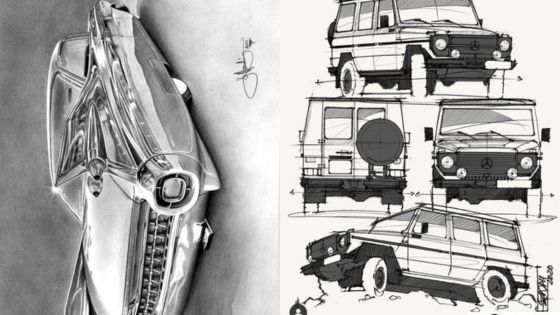The world of automobiles is undergoing a seismic shift, and nowhere is this more evident than in the captivating realm of electric vehicle design trends. Gone are the days when EVs were relegated to quirky, often uninspired forms. Today, we’re witnessing a renaissance, a bold re-imagining of what a car can be, driven by the unique opportunities and challenges that electric powertrains present. This isn’t just about swapping out a combustion engine for a battery and motor; it’s about a fundamental rethink of vehicle architecture, aesthetics, and the very interaction between human and machine. From sleek, aerodynamic exteriors that slice through the air with silent efficiency to expansive, tech-laden interiors that feel more like lounges than cockpits, EVs are blazing a trail for automotive innovation. Get ready to dive deep into the exciting developments shaping the cars of tomorrow, today.
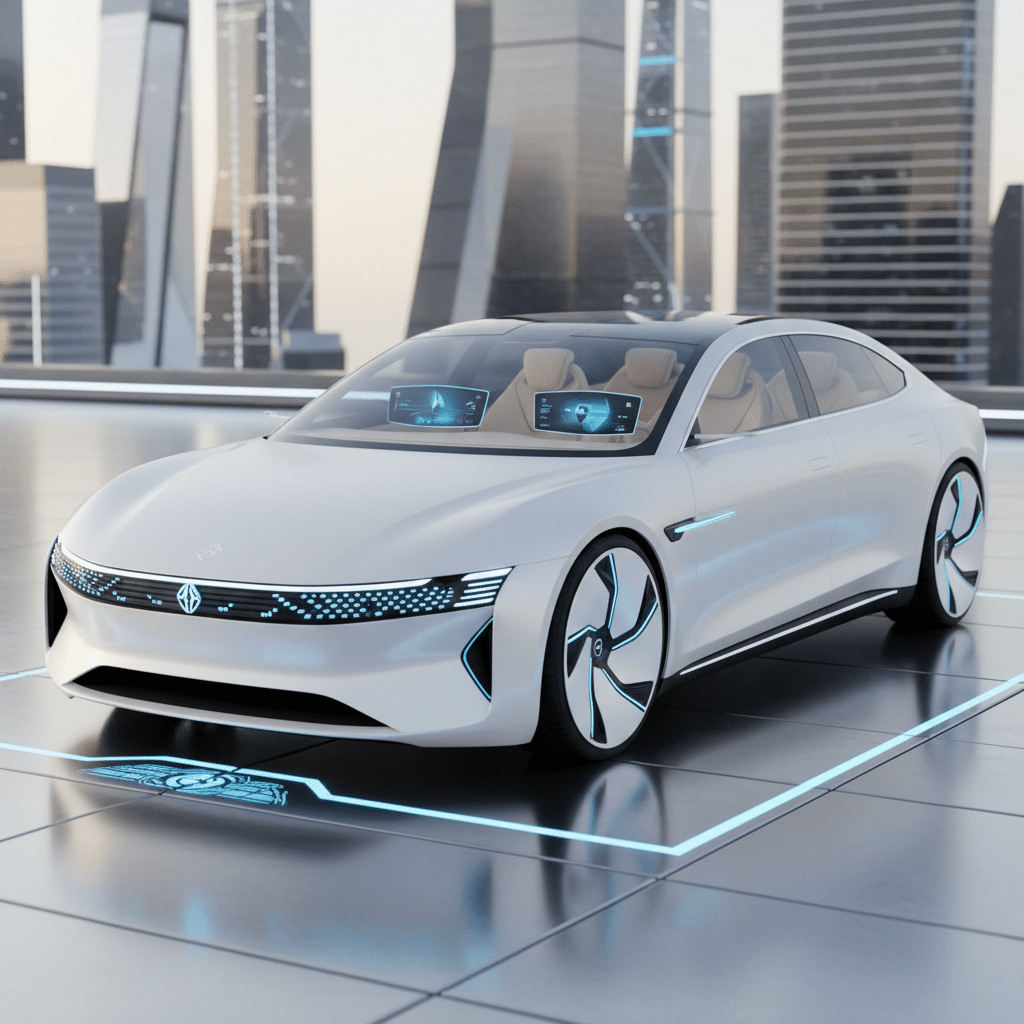

Aerodynamics Meets Aesthetics: The Slippery Silhouette
One of the most defining characteristics of modern EV design is the absolute obsession with aerodynamics. Unlike gasoline-powered cars, where a powerful engine can often compensate for less-than-optimal airflow, an EV’s range is directly impacted by how efficiently it moves through the air. Every gram of drag shaved off translates into more miles on a single charge. This critical requirement is pushing designers towards incredibly sleek, smooth, and often minimalist exterior forms.
Think about it: fewer sharp edges, flush door handles that retract into the bodywork, active grille shutters that open only when cooling is needed, and often a distinctly coupé-like roofline even on larger vehicles. These aren’t just styling choices; they’re engineering imperatives. Car manufacturers are employing advanced computational fluid dynamics (CFD) and wind tunnel testing more rigorously than ever before, shaping every curve, every panel gap, and even the underbody for optimal airflow. The result is a signature “slippery” aesthetic that is becoming synonymous with electric mobility.
But it’s not just about efficiency. These aerodynamic shapes often create a sense of forward momentum and futuristic elegance. There’s a certain purity in the lines, a quiet confidence that reflects the silent power beneath. From the elongated teardrop shapes of early efficiency pioneers to the muscular yet refined forms of performance EVs, designers are finding ways to blend scientific necessity with compelling visual language. This balance is key; an EV needs to perform, but it also needs to make a statement, to feel aspirational. This focus on aerodynamic sculpting is transforming how we perceive cars, moving away from aggressive, grille-heavy fronts towards a more sophisticated, often minimalist approach.

Interior Revolution: More Than Just a Cabin
Step inside a modern electric vehicle, and you might wonder if you’ve entered a car or a high-tech living room. The absence of a large engine block and transmission tunnel liberates a surprising amount of interior space, leading to truly transformative design opportunities. This “skateboard” platform, where batteries are integrated into the floor, allows for flat floors and expansive cabins. Designers are seizing this chance to redefine the in-car experience, making comfort, connectivity, and versatility paramount.
Traditional cockpits are giving way to open, airy environments. Seats can often recline further, swivel, or even face each other in some concepts, hinting at a future of autonomous travel where the driver is no longer perpetually focused on the road. Storage solutions are becoming more creative and integrated, moving beyond simple gloveboxes to include vast frunks (front trunks), clever cubbies, and modular compartments that adapt to passenger needs.
Redefining Materials and Ambiance
The material palette inside EVs is also shifting. There’s a strong move towards sustainable and ethically sourced materials. Recycled plastics, vegan leathers, cork, bamboo, and even fabrics made from ocean waste are becoming common. These materials not only reduce environmental impact but also often offer unique textures and aesthetics, contributing to a premium yet responsible feel. The emphasis is on creating a serene, almost minimalist atmosphere, a sanctuary from the outside world.
Lighting plays a crucial role too. Ambient lighting, often customizable in color and intensity, washes over the cabin, enhancing mood and visibility. It can highlight design elements, indicate charging status, or even provide subtle alerts. The overall effect is an interior that feels less like a functional compartment and more like a thoughtfully designed personal space, optimized for passenger well-being and interaction. This evolution of interior concepts, where innovative interior concepts take center stage, makes every journey a more immersive experience. The choices in upholstery in interior design are also changing, with a greater emphasis on sustainability and a premium, tactile feel.
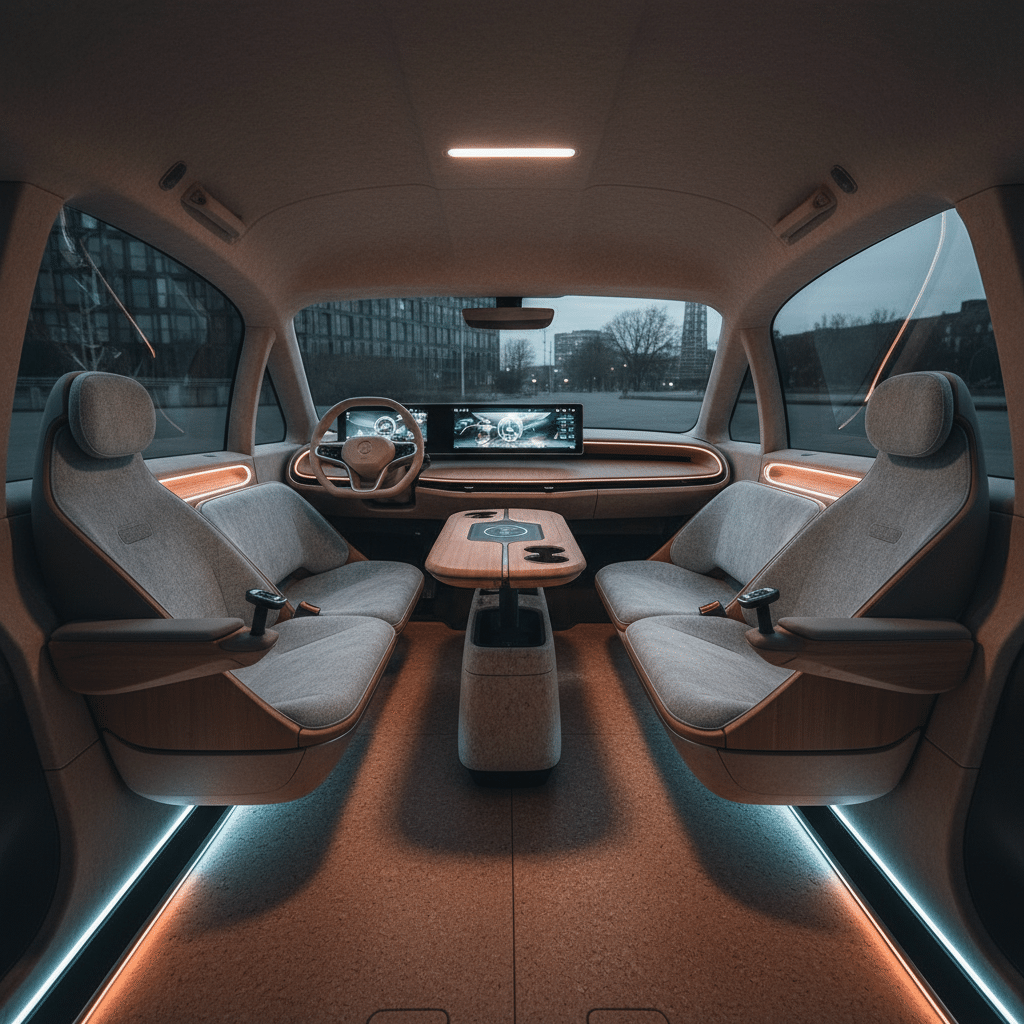
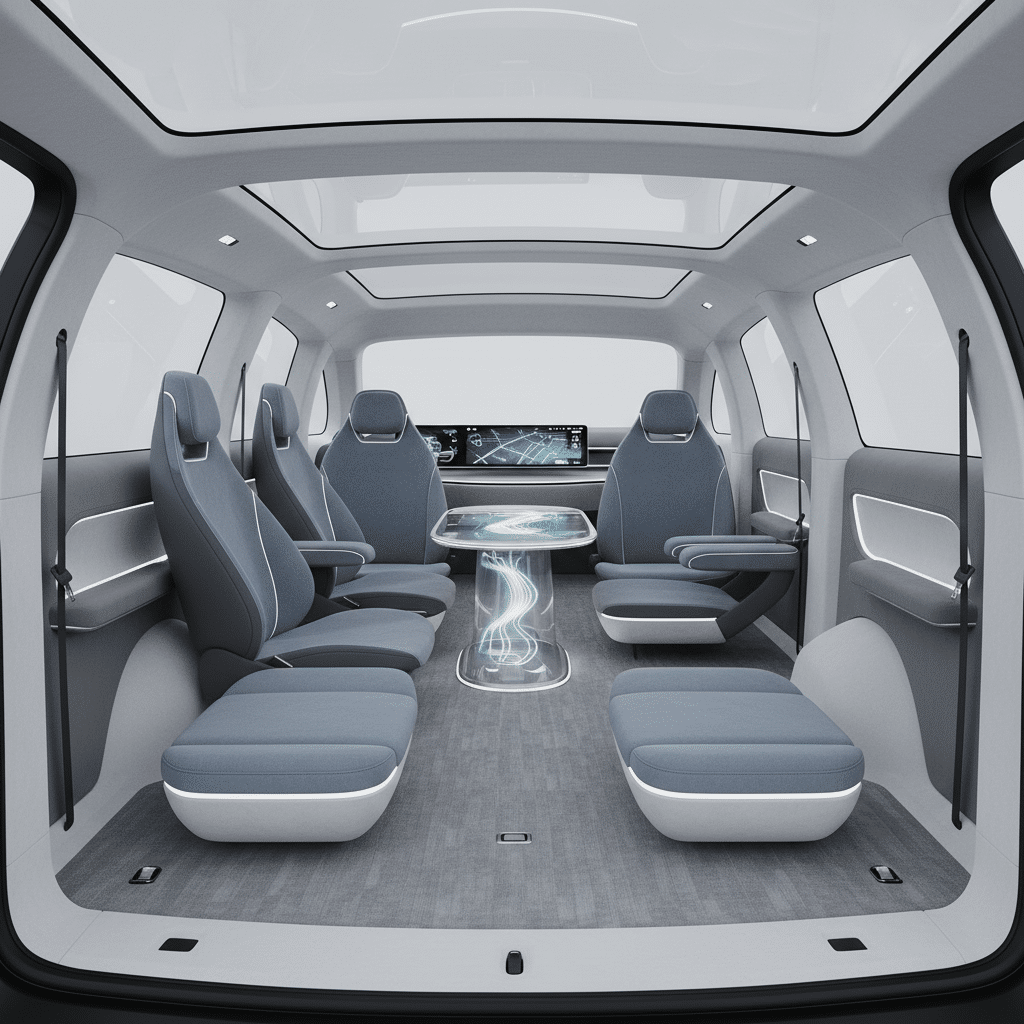
The Software-Defined Vehicle (SDV) & UX/UI Dominance
If the exterior is about sleekness and the interior about spaciousness, then the digital experience is where EVs truly set themselves apart. We’re living in the era of the software-defined vehicle, where software dictates much of the car’s functionality, from powertrain management to infotainment. This profound shift means that the user interface (UI) and user experience (UX) are no longer afterthoughts but core design pillars.
Large, high-resolution screens – sometimes spanning the entire dashboard – are becoming the norm. These aren’t just for navigation; they’re command centers for everything from climate control and media to driver assistance systems and over-the-air updates. The challenge for designers is to create interfaces that are intuitive, aesthetically pleasing, and safe to use while driving. This requires a deep understanding of human-computer interaction, blending physical controls with touchscreens, and leveraging voice commands and gesture controls.
Personalization and Digital Ecosystems
Modern EV UX/UI focuses on personalization, allowing drivers to customize layouts, themes, and even driving modes to their preferences. Seamless integration with smartphones and other smart devices is expected, turning the car into another node in your digital life. The digital experience extends beyond the vehicle itself, connecting to charging networks, remote diagnostics, and even smart home systems.
This intense focus on the digital realm means automotive designers are increasingly working alongside software engineers, UX researchers, and graphic designers. The goal is to make complex technology feel effortlessly simple and deeply engaging. This shift is giving rise to sophisticated automotive UI design that prioritizes clarity, responsiveness, and a personalized feel, making the interaction with the vehicle as smooth and enjoyable as the drive itself.
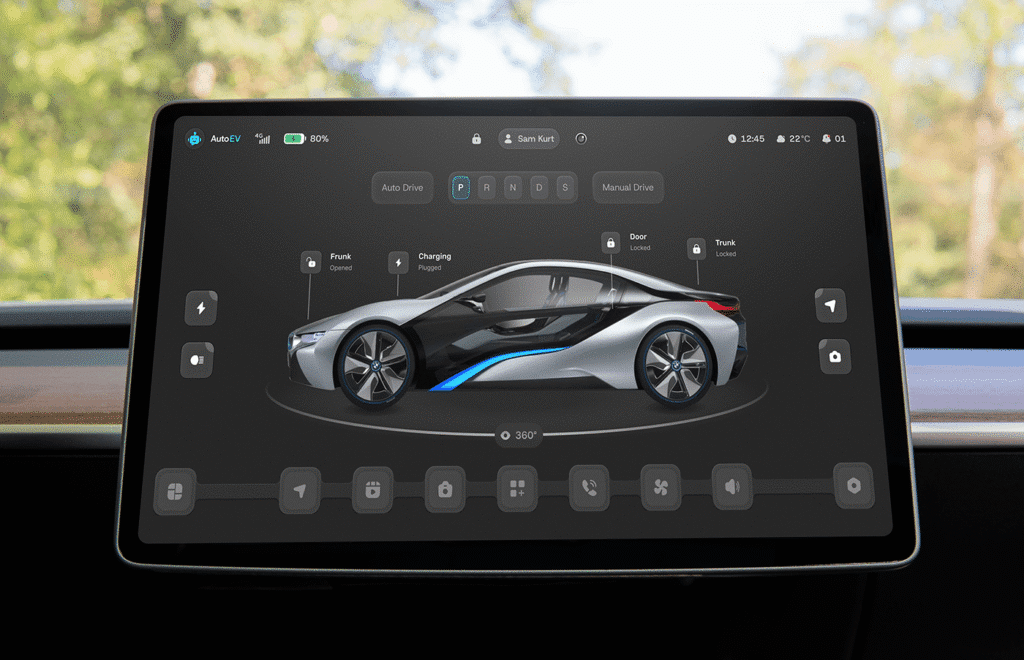
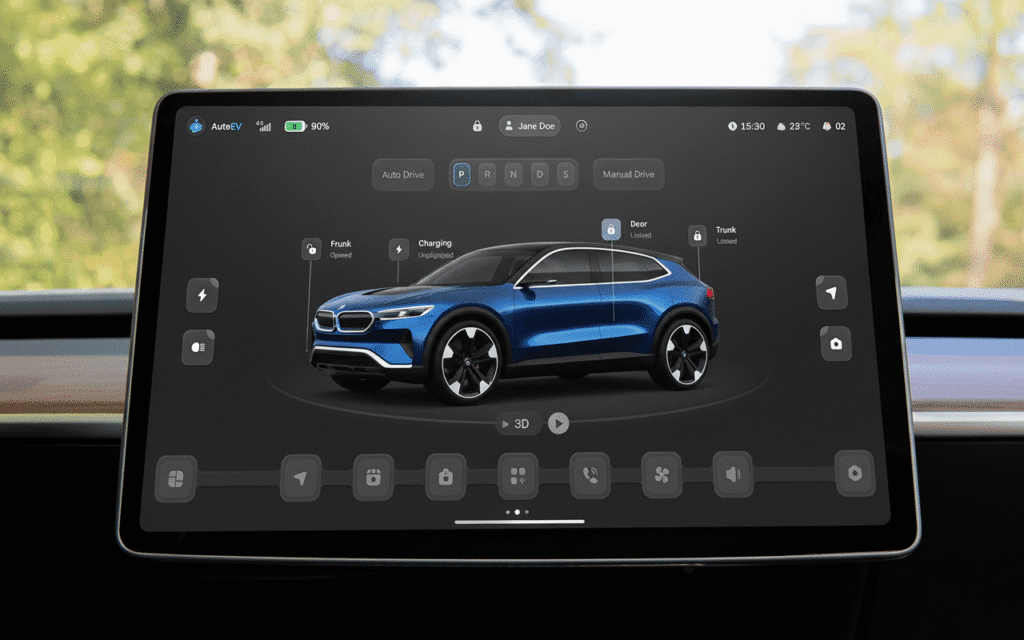
Sustainable Materials and Manufacturing: A Greener Ride
The very ethos of electric vehicles is rooted in sustainability, and this philosophy is increasingly extending beyond the powertrain to the materials used and the manufacturing processes themselves. Consumers are becoming more conscious of the environmental footprint of their purchases, and EV manufacturers are responding with innovative solutions.
We’re seeing a conscious move away from traditional plastics and leathers towards alternatives that are recycled, renewable, or bio-based. Examples include upholstery made from recycled PET bottles, seat fabrics woven from repurposed fishing nets, and interior trim crafted from cork, wood, or flax fibers. Even the paint processes are being refined to reduce volatile organic compounds (VOCs) and minimize water usage.
Circular Economy Principles
Beyond materials, the manufacturing process for EVs is also embracing circular economy principles. This involves designing components for easier recycling at the end of the vehicle’s life, reducing waste, and often using renewable energy sources in production facilities. Some manufacturers are even exploring “local sourcing” to reduce transport emissions. The goal is to create a holistic sustainable product, from cradle to grave. This commitment to eco-friendly design isn’t just a marketing ploy; it’s a fundamental aspect of EV identity, aiming to offer a truly greener mobility solution. This dedication extends to how products are developed, often involving extensive 3D modeling and prototyping, ensuring every element is considered for sustainability and performance before physical production. Designers often design it before they build it, with 3D modeling in action to visualize and refine sustainable elements.
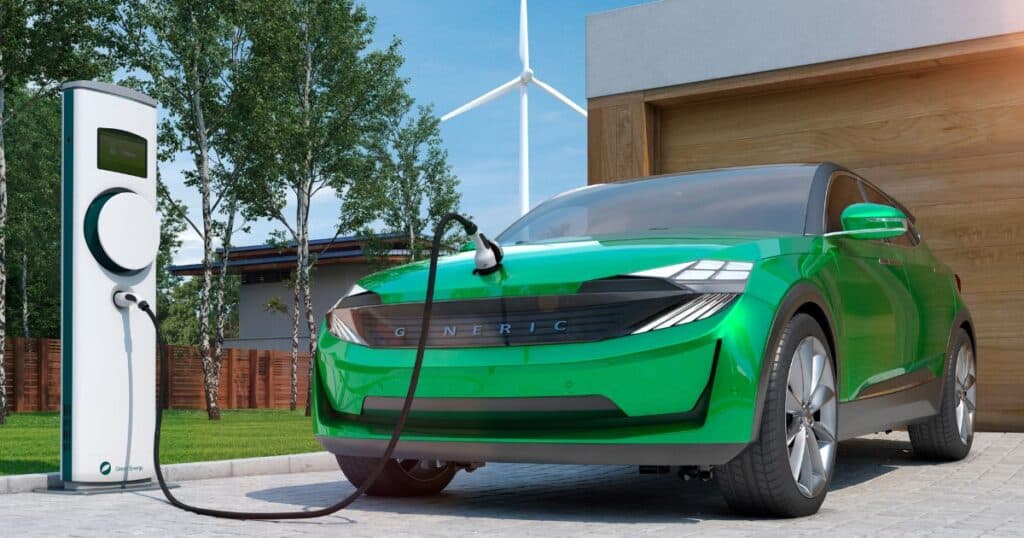
Modular Platforms and Scalability: The Lego Set Approach
One of the most significant advantages of electric vehicle architecture is the flexibility offered by modular “skateboard” platforms. Imagine a standardized base chassis that integrates the battery pack, electric motors, and associated electronics. This common foundation can then be adapted with different body styles, wheelbases, and cabin configurations.
This modularity allows manufacturers to efficiently develop a wide range of vehicles – from compact city cars and sleek sedans to robust SUVs and even commercial vans – all from essentially the same underlying platform. This approach streamlines research and development, reduces manufacturing costs, and accelerates the pace of new model introductions. It’s like building with advanced Lego sets, where core pieces combine in endless variations.
Design Freedom and Brand Identity
For designers, modular platforms offer a newfound freedom. With the powertrain components neatly packaged below the floor, they are no longer constrained by the bulky requirements of internal combustion engines. This opens up possibilities for radical proportions, shorter overhangs, and more diverse cabin layouts, as discussed earlier.
Despite using common platforms, designers still face the challenge of creating distinct brand identities and visual differentiation between models. This often relies on unique exterior styling, lighting signatures, interior themes, and advanced UX/UI elements that give each vehicle its own personality. The modular approach is a game-changer, allowing for rapid innovation and customization while maintaining cost efficiencies.
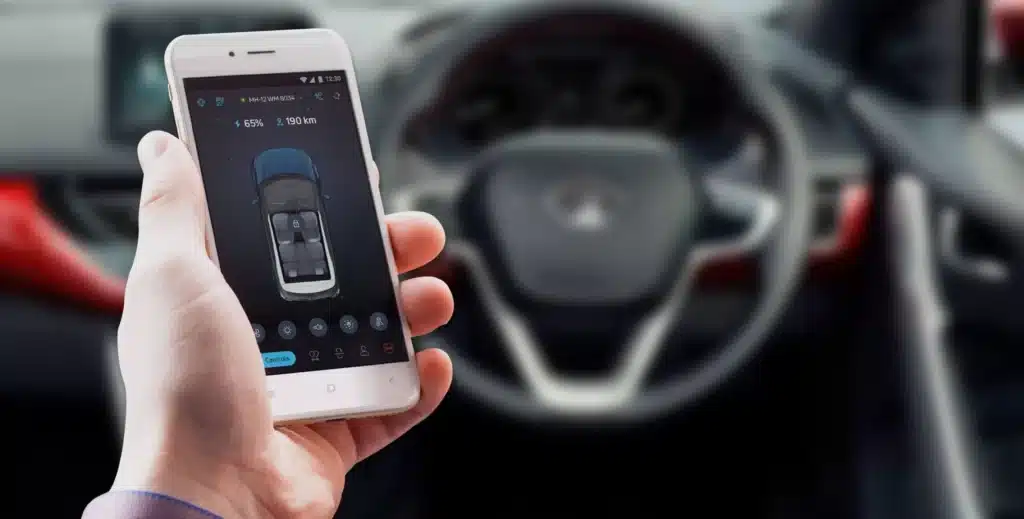
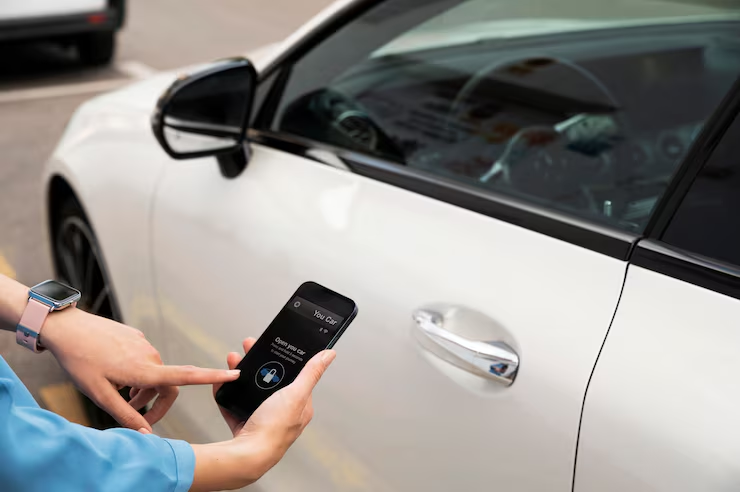
Lighting as a Design Signature: The Illuminated Identity
In the dark, an EV’s lighting is often its most striking feature. Beyond mere illumination, lighting has evolved into a powerful design tool, a signature element that defines a vehicle’s identity. With LED technology, designers have incredible freedom, creating intricate light patterns, dynamic animations, and even interactive elements.
Think about the distinct light bars that span the width of some EV fronts and rears, or the segmented daytime running lights that create an unmistakable “face” for a car. These aren’t just aesthetic; they can also communicate information, like charging status, driver assistance system engagement, or even a welcome sequence as you approach the vehicle.
Interior Illumination and Interaction
Inside, ambient lighting takes on a more sophisticated role. It’s not just about illuminating the cabin but about creating mood and atmosphere. Customizable color schemes can reflect a driver’s personality or adapt to different driving conditions. Light can also be used functionally, guiding the eye to important controls or indicating alerts without being intrusive. Some designs even integrate light into dashboard surfaces or door panels, creating a seamless, futuristic feel.
This intelligent use of light extends to projections, where vehicle logos or welcome messages are projected onto the ground as you approach, adding a touch of theatricality and luxury. Lighting, therefore, is no longer just about seeing and being seen; it’s about expression, information, and creating an immersive experience that enhances the overall appeal of the electric vehicle.
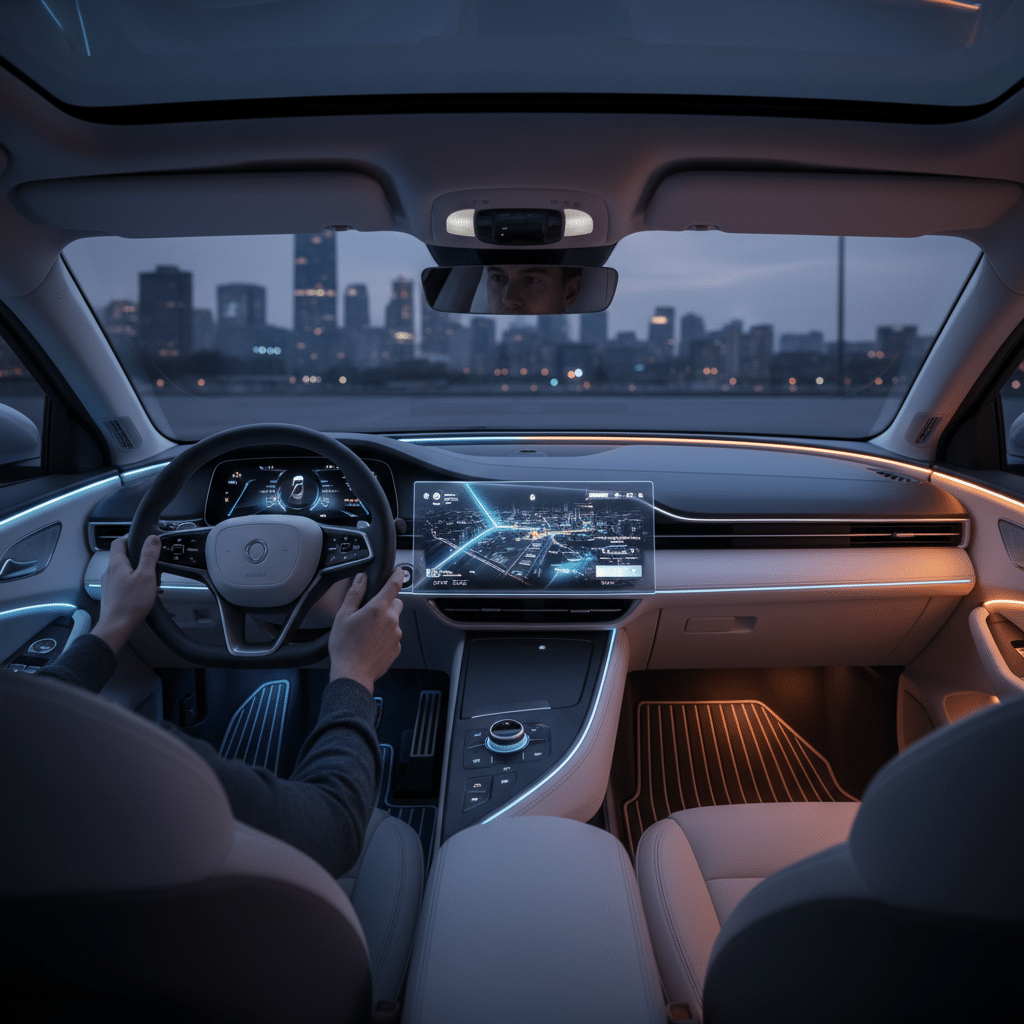
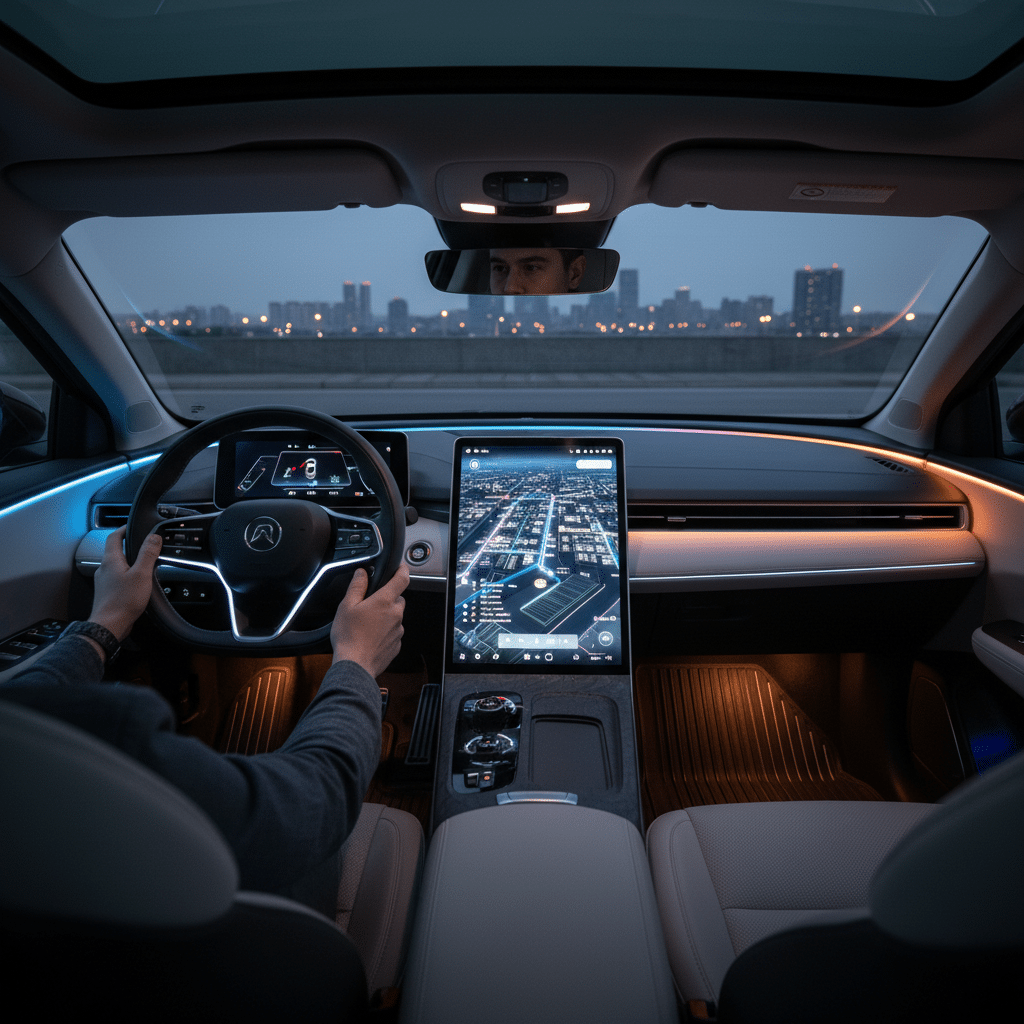
Autonomous-Ready Design: Preparing for a Driverless Future
While fully autonomous vehicles are still some way off for widespread adoption, current EV design trends are already laying the groundwork for this future. Many design choices are subtly (or not so subtly) hinting at a future where the driver might become a passenger.
One key aspect is the aforementioned spacious and flexible interior. With the potential for the steering wheel to retract or disappear entirely, and seats that can reconfigure, the cabin becomes a versatile space for work, relaxation, or socializing. Displays are positioned for easy viewing by all occupants, not just the driver.
External Communication and Sensor Integration
Externally, autonomous readiness means seamless integration of sensors – cameras, radar, lidar – into the vehicle’s bodywork. These sensors need to be effectively placed for optimal functionality without disrupting the aesthetic flow. Designers are finding clever ways to camouflage these technologies, integrating them into grilles, bumpers, and even headlights, making them an almost invisible part of the vehicle’s design.
Furthermore, future autonomous vehicles will need to communicate with pedestrians and other road users. This might involve external display panels, dynamic lighting patterns, or audible signals that convey the vehicle’s intentions. While nascent, this concept is already influencing the placement and design of exterior lighting and display areas, ensuring that EVs are not just smart, but also communicative, paving the way for a safer, more integrated autonomous future.
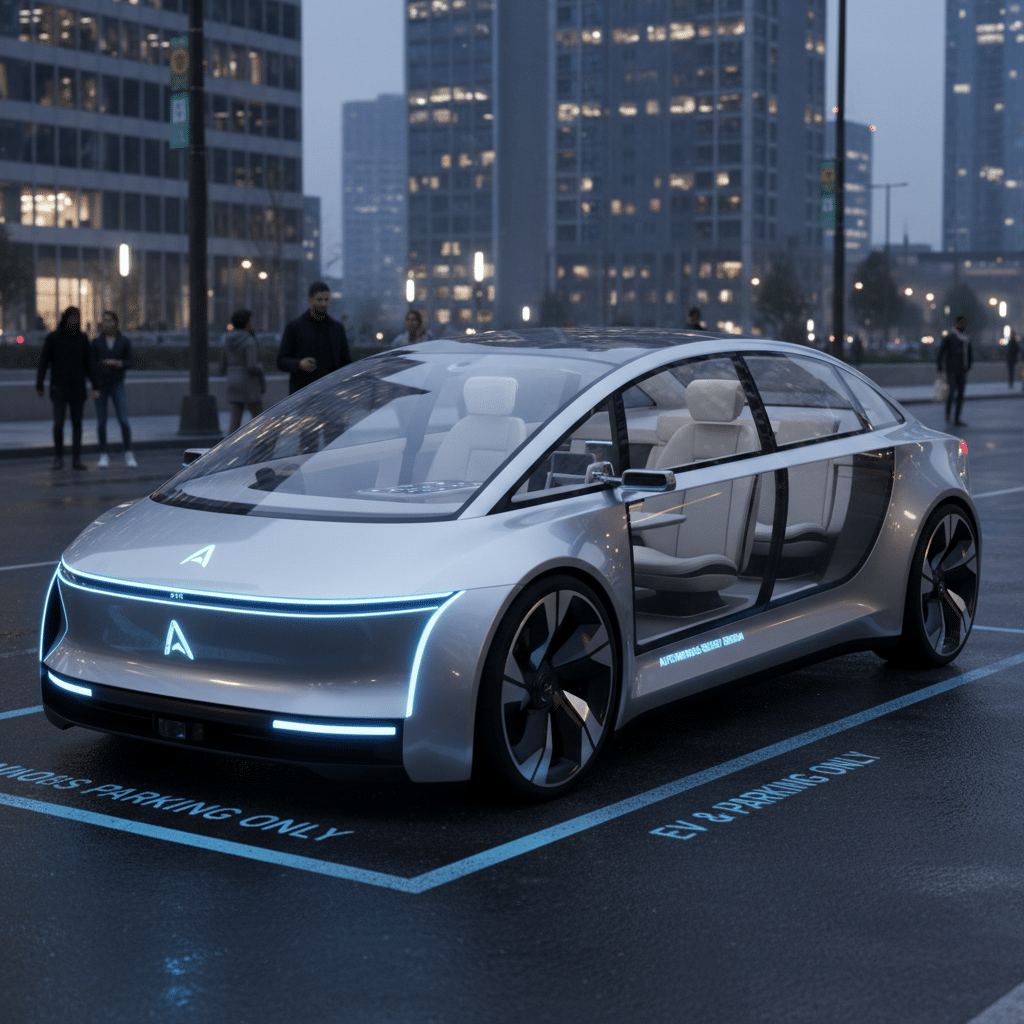
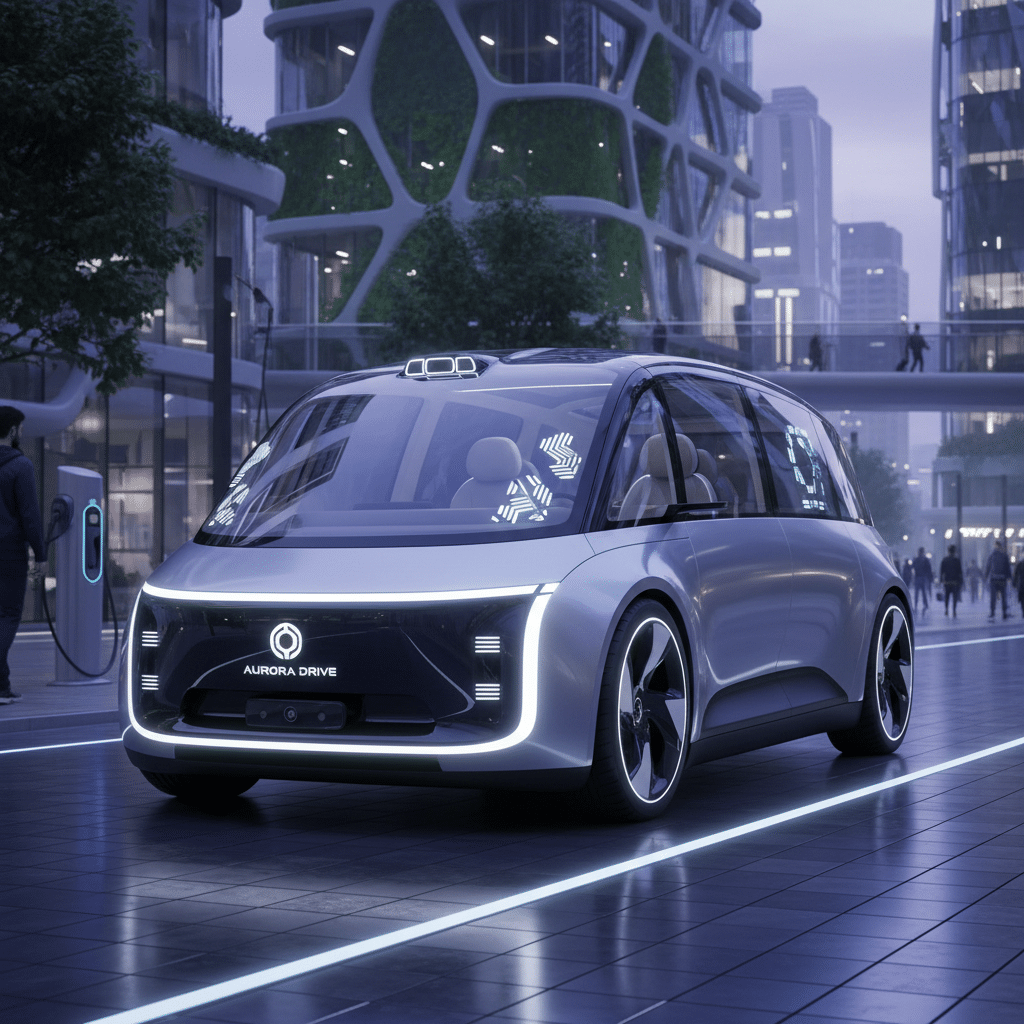
Personalization and Customization: Making it Yours
In an increasingly standardized world, the desire for personalization is stronger than ever. EVs, with their digital capabilities and modular construction, are perfectly poised to offer unprecedented levels of customization. This goes beyond choosing a paint color; it’s about making the vehicle truly reflect the owner’s personality and needs.
Software-driven features allow for extensive digital personalization. Drivers can tailor their dashboard displays, ambient lighting colors, sound profiles, and even accelerator responsiveness. Over-the-air updates mean that new features and customization options can be added long after purchase, keeping the vehicle fresh and evolving.
Physical Customization and Accessories
Physically, manufacturers are offering a growing array of accessories and modular components. This could include interchangeable interior panels, various wheel designs, roof racks that integrate seamlessly, or even bespoke exterior accents. The ease of manufacturing with technologies like 3D printing also opens doors for customers to design and produce their own accessories, making their car truly unique.
The rise of special editions and limited-run models further caters to this desire for individuality. Companies are working to ensure that even though many EVs share platforms, each vehicle can still offer a distinct and personal experience. This trend transforms the car from a mere mode of transport into an extension of the owner’s identity, much like interior upgrades that make your sports car feel custom-built.
Sound and Haptics: The New Sensory Experience
One of the most striking differences about electric vehicles is their silence. While this is a huge advantage, it also creates a new design challenge: how to replace the visceral, emotional connection many drivers have with engine sounds. EV designers are tackling this by crafting unique “sound signatures” and incorporating advanced haptics.
Manufacturers are creating artificial sounds for their EVs – both interior and exterior. Externally, these sounds (Vehicle Acoustic Alerting Systems, or AVAS) are mandated in many regions to alert pedestrians to the car’s presence at low speeds. Internally, these subtle, often futuristic hums and whirs aim to convey a sense of power, speed, or serenity, enhancing the driving experience without mimicking a combustion engine. These sounds are often customizable, allowing drivers to choose a profile that resonates with them.
Haptic Feedback: Touch and Feel
Beyond sound, haptic feedback is becoming more prevalent. This involves using vibrations and tactile sensations to communicate information or enhance interaction. A steering wheel might vibrate to warn of a lane departure, or a touchscreen button might provide a subtle “click” sensation to confirm an input. This adds another layer of sensory engagement, making the digital interfaces feel more tangible and responsive.
Together, these auditory and tactile design elements create a new, distinct sensory experience for electric vehicles. It’s about building a unique character, an identity that is inherently electric, rather than simply trying to emulate the past. This conscious design of sensory input contributes to the overall premium and futuristic feel of modern EVs.
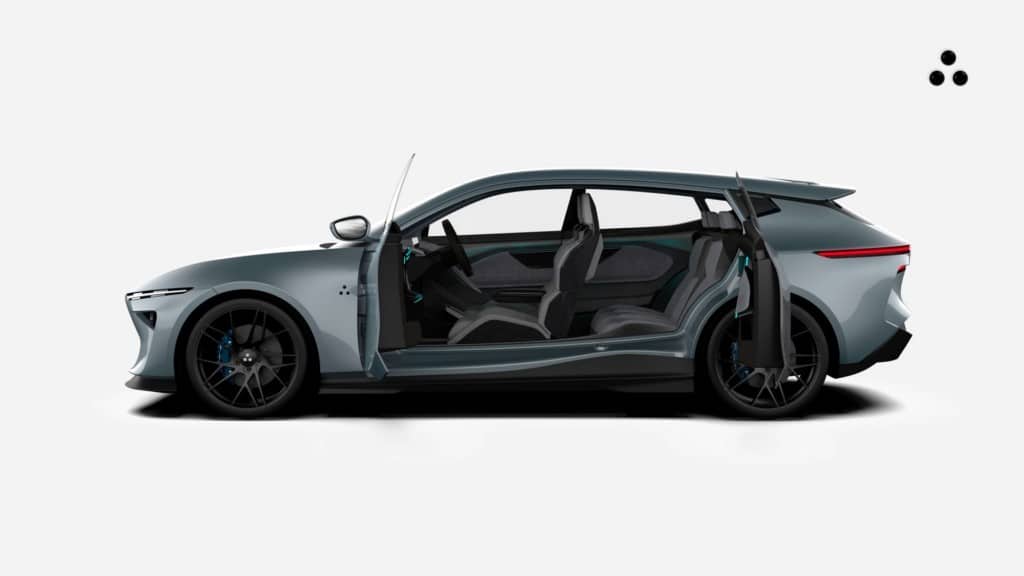
Charging Integration and Infrastructure Influence: Design for Convenience
The practicalities of charging play a significant role in EV design, influencing everything from port placement to overall vehicle shape. As charging infrastructure evolves, so too do the ways vehicles are designed to interact with it.
Charging ports, once an afterthought, are now often integrated seamlessly into the car’s aesthetic, sometimes hidden behind a flush panel or cleverly incorporated into the front grille. Some futuristic concepts even explore inductive charging pads built into the vehicle’s underbody, eliminating the need for cables altogether.
Range Anxiety and Visual Cues
Designers are also addressing “range anxiety” through visual cues and intuitive interfaces. Dashboard displays provide clear, real-time information about battery status, estimated range, and nearby charging stations. The car’s exterior lighting might even indicate charging progress, making it easy to check at a glance.
Furthermore, the influence of charging is extending to vehicle categories. The increasing demand for longer ranges and faster charging is impacting battery size and thermal management, which in turn affects vehicle dimensions and aerodynamics. Design is not just about looks; it’s about solving real-world challenges to make the EV experience as convenient and stress-free as possible.
The Revival of Retrofuturism and Unique Form Factors
While many EVs embrace a sleek, futuristic aesthetic, another fascinating trend is the embrace of “retrofuturism” and entirely new, often unconventional, form factors. This shows a willingness among designers to break free from traditional automotive archetypes.
Retrofuturism draws inspiration from past visions of the future, blending classic lines with modern technology. This can manifest as vehicles with boxier, more utilitarian shapes reminiscent of older utility vehicles, but re-imagined with smooth EV surfaces and advanced lighting. It’s a nod to heritage while firmly looking forward, creating vehicles that feel timeless yet cutting-edge.
Beyond the Car: Novel Form Factors
Beyond classic car shapes, the modular nature of EV platforms is enabling truly unique form factors. We’re seeing everything from compact urban mobility pods designed for maximum maneuverability to multi-purpose vehicles that blur the lines between car, van, and even small bus. These designs prioritize specific functions – be it cargo capacity, passenger comfort, or urban agility – leading to vehicles that challenge our preconceptions of what a “car” should look like.
This willingness to experiment demonstrates the flexibility inherent in EV design. Without the constraints of a conventional engine and drivetrain, designers are free to explore forms that are optimized purely for human needs and aesthetic appeal, leading to a much more diverse and exciting landscape of personal transportation.
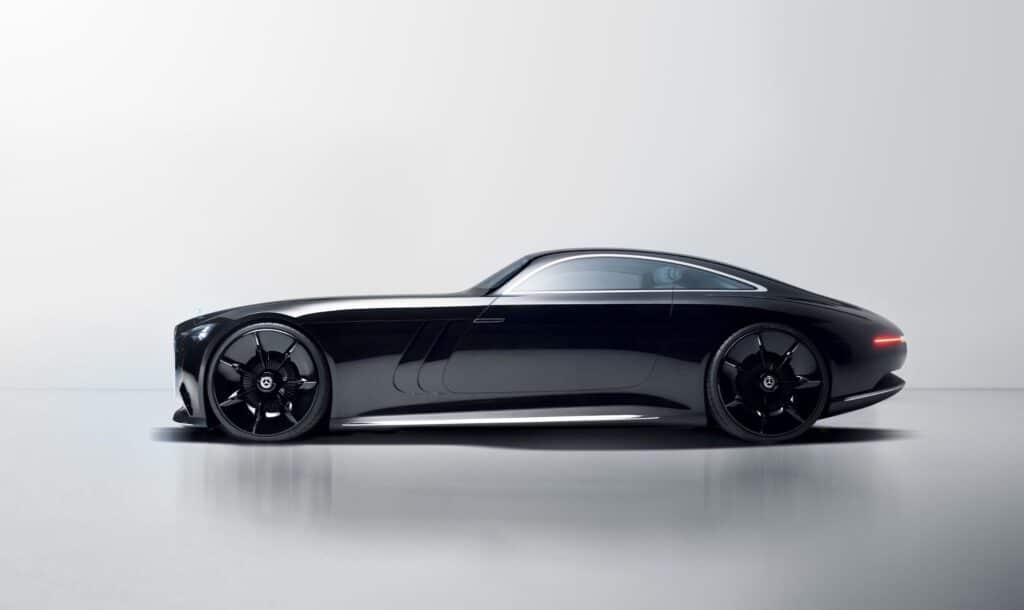
Conclusion
The evolution of electric vehicle design trends is far more than a simple aesthetic update; it represents a paradigm shift in how we conceive, engineer, and interact with our personal mobility solutions. From the aerodynamic efficiency dictating exterior silhouettes to the liberation of interior space fostering lounge-like cabins, and the immersive digital experiences driven by advanced UX/UI, every element is being reimagined.
We’ve seen how sustainable materials are becoming standard, how modular platforms are accelerating innovation, and how lighting is becoming a key identifier. The future of autonomy is subtly shaping current designs, and the desire for personalization is allowing owners to truly make their EVs their own. Even the previously silent EV is finding its voice through engineered sounds and haptics, while the practicalities of charging are seamlessly integrated into the design. Lastly, the playful exploration of retrofuturism and novel form factors promises a diverse and exciting array of vehicles.
The journey of electric vehicle design is an ongoing testament to human ingenuity, pushing the boundaries of technology, sustainability, and human-centered design. These trends are not just shaping the cars we drive but are fundamentally altering our relationship with transportation, promising a future that is cleaner, smarter, and infinitely more thrilling. As technology continues to advance, imagine what incredible innovations lie just around the corner, waiting to redefine our expectations yet again.
- 6shares
- Facebook0
- Pinterest6
- Twitter0

